I have a search query in LDAP like this. What exactly does this query mean?
("CN=Dev-India,OU=Distribution Groups,DC=gp,DC=gl,DC=google,DC=com");
I have a search query in LDAP like this. What exactly does this query mean?
("CN=Dev-India,OU=Distribution Groups,DC=gp,DC=gl,DC=google,DC=com");
CN = Common NameOU = Organizational UnitDC = Domain ComponentThese are all parts of the X.500 Directory Specification, which defines nodes in a LDAP directory.
You can also read up on LDAP data Interchange Format (LDIF), which is an alternate format.
You read it from right to left, the right-most component is the root of the tree, and the left most component is the node (or leaf) you want to reach.
Each = pair is a search criteria.
With your example query
("CN=Dev-India,OU=Distribution Groups,DC=gp,DC=gl,DC=google,DC=com");
In effect the query is:
From the com Domain Component, find the google Domain Component, and then inside it the gl Domain Component and then inside it the gp Domain Component.
In the gp Domain Component, find the Organizational Unit called Distribution Groups and then find the object that has a common name of Dev-India.
What are CN, OU, DC?
From RFC2253 (UTF-8 String Representation of Distinguished Names):
String X.500 AttributeType
------------------------------
CN commonName
L localityName
ST stateOrProvinceName
O organizationName
OU organizationalUnitName
C countryName
STREET streetAddress
DC domainComponent
UID userid
The string ("CN=Dev-India,OU=Distribution Groups,DC=gp,DC=gl,DC=google,DC=com") is a path from an hierarchical structure (DIT = Directory Information Tree) and should be read from right (root) to left (leaf).
It is a DN (Distinguished Name) (a series of comma-separated key/value pairs used to identify entries uniquely in the directory hierarchy). The DN is actually the entry's fully qualified name.
Here you can see an example where I added some more possible entries.
The actual path is represented using green.
The following paths represent DNs (and their value depends on what you want to get after the query is run):
"DC=gp,DC=gl,DC=google,DC=com""OU=Distribution Groups,DC=gp,DC=gl,DC=google,DC=com""OU=People,DC=gp,DC=gl,DC=google,DC=com""OU=Groups,DC=gp,DC=gl,DC=google,DC=com""CN=QA-Romania,OU=Distribution Groups,DC=gp,DC=gl,DC=google,DC=com""CN=Dev-India,OU=Distribution Groups,DC=gp,DC=gl,DC=google,DC=com""CN=Diana Anton,OU=People,DC=gp,DC=gl,DC=google,DC=com"I want to add somethings different from definitions of words. Most of them will be visual.
Technically, LDAP is just a protocol that defines the method by which directory data is accessed.Necessarily, it also defines and describes how data is represented in the directory service
Data is represented in an LDAP system as a hierarchy of objects, each of which is called an entry. The resulting tree structure is called a Directory Information Tree (DIT). The top of the tree is commonly called the root (a.k.a base or the suffix).
To navigate the DIT we can define a path (a DN) to the place where our data is (cn=DEV-India,ou=Distrubition Groups,dc=gp,dc=gl,dc=google,dc=com will take us to a unique entry) or we can define a path (a DN) to where we think our data is (say, ou=Distrubition Groups,dc=gp,dc=gl,dc=google,dc=com) then search for the attribute=value or multiple attribute=value pairs to find our target entry (or entries).
If you want to get more depth information, you visit here
At least with Active Directory, I have been able to search by DistinguishedName by doing an LDAP query in this format (assuming that such a record exists with this distinguishedName):
"(distinguishedName=CN=Dev-India,OU=Distribution Groups,DC=gp,DC=gl,DC=google,DC=com)"